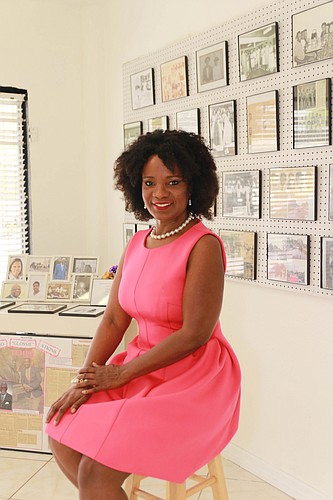- November 23, 2024
-
-
Loading

Loading

Vickie Oldham described her childhood as idyllic. Saturday mornings were spent helping her grandparents tend flowers in the garden or playing in the yards of waterfront homes of the wealthy, where her grandmother worked as a cook.
Oldham’s tales of outdoorsy exuberance took place in a Newtown she remembered as a “very close-knit” community. She attended church and Sunday school, and would often run into her teachers at the grocery store. The Martin Luther King corridor was lined with thriving businesses that provided everything the community needed.
Meanwhile, the world around her was changing. In the 1950s through 1960s, Sarasota was beginning to feel the impacts of desegregation and integration. Oldham, too, was experiencing its direct effects. Although her grandparents' house was right across the street from Booker Elementary School, she was bused about 10 miles south to Gulf Gate Elementary.
“We weren't really prepared to enter those schools,” Oldham said. “No one said to be careful about being called the N-word or this might happen or that. We were just kind of thrown in there.”
For most of her childhood, however, Oldham felt she was shielded from what was going around her. “Coming of age in Newtown, I didn’t realize what was going on with Jim Crow segregation and what African-Americans were going through because it's as if my grandparents and the community kept us from it,” she said.
Oldham eventually found herself in higher education marketing, working with historically black colleges. When Oldham returned to Sarasota in 2014, what she thought would be a short stay would turn into an in-depth exploration of Newtown's history.
At the time, officials at the city of Sarasota were looking for a consultant to complete the first phase of the Newtown Conservation Historic District Project, an initiative to document Newtown’s history first introduced by former Sarasota City Commissioner Fredd Atkins in 2005.
After submitting a proposal to the city, she was chosen as the consultant to document over 100 years of Newtown history. In eight months, Oldham and a team of volunteer researchers and historians produced about 50 oral history interviews, a 351-page research report, an inventory of the neighborhood’s historic structures, a website and mobile app, as well as placed 15 historic markers at key Newtown landmarks.
The Newtown Alive project became personal for Oldham and gave her new perspective on her childhood memory of Newtown.
“The things that I learned as I thumbed through documents and read articles were remarkable,” she said. “Things started making sense and I started connecting the dots in my own family history.”
Although Oldham has completed the project requirements outlined by the city of Sarasota, she’s committed to continuing the work of preserving Newtown history and making the area a destination for heritage tourism.
She hopes to produce a podcast to feature the oral history interviews she’s conducted.
“I interviewed the pioneers of Newtown, but I need to interview white people who remember this history too and get their perspectives,” she said.
She also leads monthly trolley tours that go through important sites through the neighborhood and is also involved in the early stages of repurposing the Goodwill building on Martin Luther King Way into a cultural arts center that will house Newtown artwork, artifacts and memorabilia.
“We're recasting Newtown's image through the lens of history,” Oldham said. “For too long, people have seen Newton as a blighted crime-ridden place. That is not the community that I remember.”
For Oldham, the Newtown Alive project has culminated into realizing the worth of local history and weaving it into revitalization plans.
“The community is changing and I am reminded of that every day,” Oldham said. “But I think it could still embrace its history and emulate some of the things that we learned from its pioneers and trailblazers.”